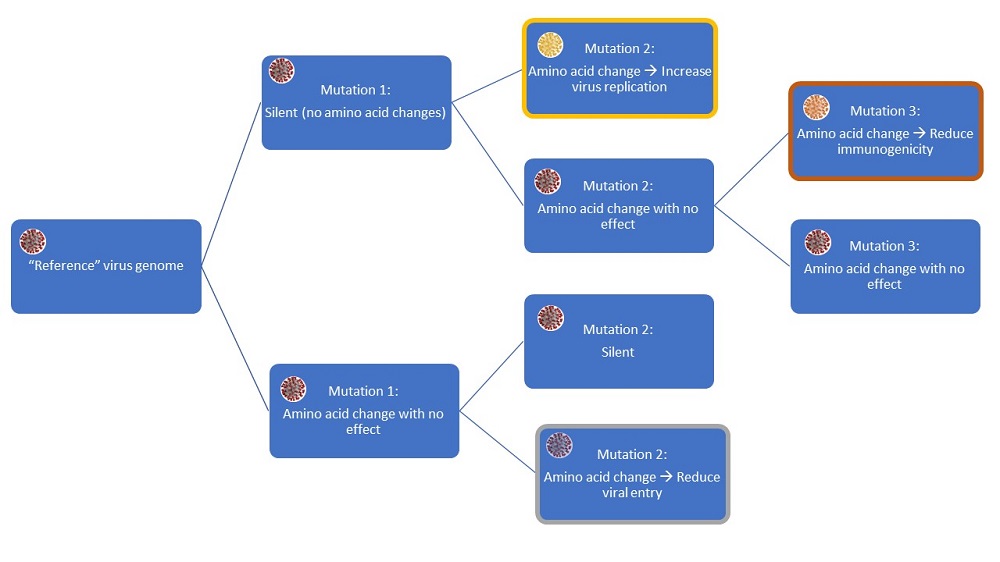The mutations that accumulate as a virus replicates in people can lead to new strains. Some of the strains can cause worse disease; some can cause less disease. The genomic sequences are compared to the genome of the “reference” virus. Mutations can be silent, not affecting the encoded proteins. Mutations can also change the amino acids of the encoded proteins without affecting the function of the protein or the ability of the immune system to recognize the protein. Mutations can alter the function of the encoded protein or the ability of the immune system to recognize it. In the sample shown above, 3 new strains arise. The strain outlined by yellow would have increased virulence. The strain outlined in orange would be able to spread more easily and could infect people who had been previously exposed to the strain lacking that mutation. The strain outlined in gray would be less virulent or even be non-pathogenic. [Credit: Nancy R. Gough, BioSerendipity, LLC]
Read more:
N. R. Gough, Defining a New Strain of a Virus. BioSerendipity (18 May 2020) https://www.bioserendipity.com/defining-a-new-strain-of-a-virus/.
Read all COVID-19 articles

